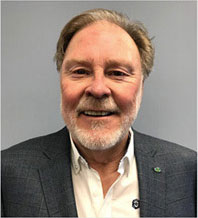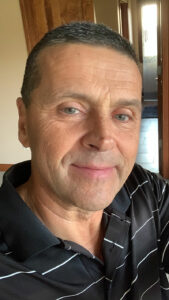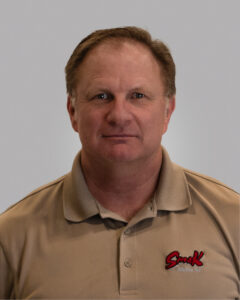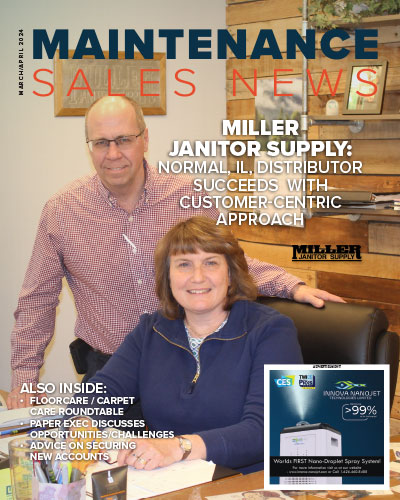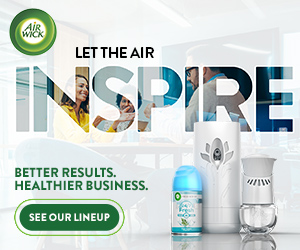Special Section: Floorcare & Carpet Care Equipment & Supplies — Opportunities, Changes And Challenges Shape AFH Floor Segment
By Harrell Kerkhoff Maintenance Sales News Editor
The proper selection of flooring, and making sure floors are well cared for to ensure longevity and occupant safety, are crucial parts to the overall success of any away-from-home (AFH) facility. It’s an area that manufacturers, distributors, and facility-care professionals can work together on for best results. This involves both hard floors and carpeted surfaces. Five AFH flooring and floorcare equipment professionals/companies were recently interviewed by Maintenance Sales News Magazine to discuss trends and share advice related to this important topic.
Ameripolish
Innovation and product development are paramount for staying competitive and meeting the market’s evolving needs when it comes to AFH floors and floorcare. Continual innovation ensures that products align with industry trends and offer enhanced aesthetics and performance.
Help in this important area of facility maintenance is always needed. For example, according to Ameripolish Sales & Marketing Manager Greg Cabot, building service contractors can experience a competitive edge by offering concrete maintenance and refurbishing services. At the same time, end-users benefit by receiving efficient and intelligent floorcare solutions that address specific challenges involving their facilities, while advanced technology in floorcare equipment enhances operational efficiency and can extend the life of floors.
When it comes to concrete flooring, Cabot said demand among those in charge of commercial spaces is booming.
“There is increased demand for sustainable, low-maintenance, and easy-to-clean flooring options. Concrete offers those features along with durability and aesthetic appeal,” he added. “Overall, various flooring types are prevalent in commercial facilities, including polished concrete, vinyl, ceramic tile, and carpet. While resilient and visually distinctive, concrete flooring demands specific but easy-to-utilize/implement maintenance plans that minimize/eliminate dulling and staining to ensure long-lasting aesthetics.”
Cabot said that according to the North America Concrete Flooring Market Size, Share & Trend Analysis Report, the concrete flooring market is expected to grow at a compound annual growth rate (CAGR) of 4.1 percent from 2023 to 2030. Meanwhile, contemporary trends in AFH flooring are emphasizing the need for improvements in indoor air quality (IAQ), sustainability, and durability.
“I see commercial properties moving away from other flooring types to improve IAQ and cleanliness, and thus it’s important building service contractors add proper concrete flooring maintenance to their routines,” Cabot said. “Also, manufacturers and distributors involved in floorcare can play a pivotal role in supporting end-users’ increasing emphasis on environmental sustainability. Prioritizing the development of sustainable architectural concrete products and offering educational resources on the environmental benefits of concrete flooring contribute to a more eco-conscious industry.
“Certifications, such as UL GREENGAURD and transparent labeling for eco-friendly floor care products, further empower end-users to make informed, environmentally responsible choices.”
Cabot also addressed how often all types of floors should be thoroughly cleaned in an AFH setting. He explained the frequency of cleaning is contingent upon such factors as flooring type and the level of foot or machinery traffic.
“High-traffic areas may necessitate daily cleaning, while others may be suitable for weekly or bi-weekly cleaning schedules. Creating a comprehensive cleaning schedule is vital for maintaining the longevity and appearance of flooring,” Cabot said. “A cleaning schedule should identify high-traffic zones for more frequent cleaning, specify suitable cleaning methods and products for each flooring type, include routine inspections for prompt issue resolution, and plan for periodic deep cleaning to enhance durability and visual appeal. Such a schedule ensures consistency in maintenance practices, proper resource allocation, and establishing a clean and inviting environment.”
Made in America, Ameripolish is the industry’s leading provider of architectural concrete products for preparing, strengthening, coloring, protecting, and maintaining concrete floors. With exclusive focus on the concrete floor industry, Ameripolish has decades of concrete floor experience and technical experts on hand to help customers solve any concrete floor challenge. For more information about Ameripolish, visit www.ameripolish.com.
Lindhaus
Flooring continues to evolve within the AFH marketplace, involving every part of a facility — from entryways and hallways to kitchens and restrooms. Such changes are based on new preferences and advancements in technology. To meet these changes head-on, those responsible today for properly cleaning and maintaining flooring must adapt, according to Lindhaus USA President Al Carpenter.
“Many facilities are going toward such products as vinyl tile flooring and away from natural hardwood,” Carpenter said. “Carpeting has also changed, from the older style wool to synthetic. With changes in floor types comes changes in how to properly take care of new floors. For example, some of the standard cleaners and vacuums are not designed to properly clean the new style of carpets.”
He added a problem many facility-care professionals face is finding the right equipment for today’s new hard floor surfaces and carpeting. Ideally, the best machines can handle both types of flooring. There is such equipment available.
When focusing on carpet care, Carpenter recommends using a vacuum that features proper height adjustment capabilities as well as an aggressive fast speed brush system. The latter feature helps to properly sweep up debris often found in areas of heavy foot traffic.
“When it comes to properly caring for floors of all types, a lot of attention should be placed on areas with concentrated foot traffic. For example, in an office building, most people are not walking from corner to corner of a room. Instead, most foot traffic takes place in a somewhat straight line. Therefore, there is a lot of space that doesn’t need to be cleaned as often, while the heavy traffic areas require continual attention,” Carpenter said. “It’s also important to understand that carpet tends to hide dirt better than hard surfaces. A lot also depends on the floor color when it comes to hiding dirt.”
Whether appearing dirty on not, proper floorcare requires the right type of equipment, cleaning procedures, products, and a well thought out commercial cleaning schedule. Debris should be swept away daily from all types of flooring, with floors thoroughly cleaned on a regular basis based on floor type and location within a facility.
Carpenter said hard surface floors, as a rule, have gained in popularity within the AFH sector. That is partly due to being viewed by some as easier to maintain and clean. One issue with hard floors, however, is slippage problems that can develop after moisture is carried onto the floor from foot traffic. That can especially be a concern in northern climates during winter weather. Properly using matting at door entrances can eliminate a lot of issues pertaining to wet hard floors, and thus, slip and fall accidents.
Carpenter was asked for his thoughts on how manufacturers and distributors involved in flooring and floorcare can better help end-users meet today’s growing focus on environmentally friendly and sustainable products and practices. In response, he said it’s important to consider how much cleaning products are being consumed and energy used when keeping a specific floor type well maintained. It also helps to use modern equipment that is more energy efficient.
“New product innovation is very important in every facet of building maintenance. That certainly holds true in floorcare,” he said. “It may not be efficient, for example, to vacuum a new type of carpeting with a machine that was designed 10 years ago. The same is accurate with hard floor care. New equipment can also improve indoor air quality during the cleaning process. That is especially the case with today’s newer vacuums that feature greatly improved filtration systems.”
The Lindhaus complete line of professional cleaning products is designed and manufactured to meet the specific needs of companies in the public and private sectors and the hygienic needs of every type of space and environment. Products include floor scrubbers, electric brooms, professional vacuum cleaners and backpacks, carpet cleaners, upright vacuum cleaners, and scrubber driers. These products are used in shops, bars, restaurants, offices, hospitals, and other high traffic places where the sanitation of the environment becomes a constant necessity. Lindhaus machines for professional cleaning can remove all kinds of dirt, residual liquid and solid properties, making them suitable for all types of environments. Visit lindhaususa.com.
Fas-Trak Industries
Noticing a rise in popularity involving luxury vinyl tile (LVT), polished concrete, and terrazzo flooring among those in charge of AFH facilities is Fas-Trak Industries Vice President of Sales Mark Feldmeier. Other common floor types found in such buildings include vinyl composition tile (VCT) and wood engineered flooring.
“In particular, there has been a shift in demand for polished concrete. Our company’s own sales have indicated that shift over the last seven years, and we feel the trend will continue,” Feldmeier said. “Walk into your local big box store and you will see it first-hand. We network extensively in the flooring arena and participate in the World of Concrete tradeshow, where emerging trends and new OEM (original equipment manufacturer) ideas are brought to the forefront. Consider 3M as an example, and what they have brought to market through the jan/san channel over the recent years that have impacted traditional methods.”
He added that regardless of floor types, using the correct cleaning methods, equipment, and products to properly remove various types of soils is key to lasting floor health.
“When it comes to floor maintenance, a lot depends on flooring type, expectations and budget,” Feldmeier said. “There are variables at play, but more often than not, the more you maintain a floor the better.”
When asked how manufacturers and distributors can better help end-users meet today’s growing demand for sustainable and environmentally friendly products and practices pertaining to flooring and floorcare, Feldmeier explained that education, awareness, and acceptance are all essential when adapting to new ideas.
“The distributor dynamic has changed dramatically in recent years with mergers and acquisitions at a large scale. We find that (some distributors) are less prone to adapt to change due to the scale of the business. The remaining independent distributors should be, and are, more prone to adapt and embrace change, because they have to in order to survive,” Feldmeier said. “Consultative selling requires more thought-planning and work, but we have seen that it is very effective in helping more companies and professionals stay current in a very changing world. This is an opportunity that should always be in play in the flooring arena.”
Feldmeier added innovation and new product development also play vital roles in the flooring sector, helping businesses meet new market requirements.
“This is a matter of survival and part of free market capitalism. Markets usually dictate outcomes,” he said.
Fas-Trak Industries only offers innovations in the jan/san industries. Makers of Ultra-Trak Plus 5-1 application system, Micro-Trak Plus application system, 3D stripping systems, and other amazing innovations. Visit Fastrakind.com.
U.S. Products
Stressing the importance of product development and innovation as it pertains to AFH floor and carpet care equipment and supplies is U.S. Products CEO Jon Smalley. He noted innovation is critical for all involved due to basic market trends.
“For example, the number of adults living in AFH housing facilities is growing exponentially. New cleaning systems must be able to clean/extract more square footage in an easier manner and in less time. There is also an increasingly limited workforce available, especially of trained surface cleaning crews. Therefore, extraction systems must be more efficient, easy to use and maintain, and have large capacity cleaning capabilities for all surfaces,” Smalley said. “And, there is little time today for training. All cleaning equipment must be simple for users to operate. Manufacturers must provide easy-to-access instructional use and maintenance videos so that users can quickly learn how to operate a system.”
Smalley explained that surface types are also changing at AFH facilities.
“Many of these facilities now have wood, laminate, tile, carpet, and other flooring in multiple high-capacity areas,” he said. “In response, floor cleaning extractors must be reliable, durable and feature multi-surface capabilities so crews can seamlessly move from one area to the next — with little training or change of tools.”
The main types of flooring that must be cleaned in AFH facilities, according to Smalley, are: Luxury Vinyl Tile, Vinyl Composite Tile, Sheet Vinyl, Rubber flooring, Bamboo and Wood Laminate, and Commercial Carpet.
“In response to such floor types, the four specific requests we (as a company) receive from AFH housing facilities are: To offer products that can provide an extreme level of cleanliness and sanitization for multi-surface flooring; Deliver the most powerful levels of heated psi and high lift extraction capabilities — so that areas can be cleaned faster and more efficiently; Include advanced features such as an auto dump pump, dual vacuums, and large capacity so crews can complete larger jobs with greater speed and productivity; and, Make all tools and extractors lightweight, portable and ergonomic — so that operations crews can clean more effectively,” Smalley said.
When asked how often floors should be thoroughly cleaned in an AFH setting, Smalley explained that high traffic sectors — as well as medical, cooking and dining areas — should be cleaned daily. Medium traffic meeting rooms, conference and exercise areas should be cleaned weekly. Offices, storage, and low traffic areas should be cleaned quarterly — at least four to six times per year. And, weather extremes — such as snow, rain or other situations that bring trackable moisture, dirt, and road oils and grease into a facility — require areas be cleaned as part of shift maintenance.
Smalley also provided advice on how manufacturers and distributors involved in floor care can help end-users meet today’s growing focus on environmentally friendly and sustainable products and practices. He explained dual vacuum extractors produce faster drying times. This makes both carpet and hard flooring usable within minutes, rather than days. This is important for AFH facilities because the space must be ready and available quickly for people to use for activities and gatherings. A dual vacuum extractor eliminates latent moisture — especially on hard surfaces — and reduces the chance of people slipping and falling if the floor is wet.
“Buyers should be encouraged to choose advanced floor extraction systems that provide more power, dual vacuums, higher psi and lift for faster cleaning. These built-in power features allow crews to complete more square footage in less time, while using less water, power, and cleaning solvents,” he said. “Focusing on product ergonomics for better ‘ease of use’ is also important. Studies show that crews work faster and complete more space in less time when they have lightweight, efficient tools such as high capacity, portable extractors that can be utilized in all situations and across all surfaces, anywhere, anytime. Using higher heat is also important. High temperature cleaning creates a faster turnaround. By reducing the time it takes for areas to be cleaned, an operation can turn around the space faster and increase area usability and worksite productivity.
“Product durability, simple maintenance, a solid track record for reliability, and advanced features and cleaning capabilities are important as well. These combine to provide a long-lasting system that is easy to use, maintain, and has a work life that increases sustainability.”
Smalley added: “Commercial and operational sanitation and maintenance crews want a superior extractor tool that delivers the most power, the greatest durability, and the best heated cleaning for the fastest drying time. New heated carpet extractors allow cleaning crews to take on larger spaces and jobs and complete those jobs with greater speed, efficiency, and productivity.
“Operations should do their homework: talk to users and dealers. Also, select high/adjustable psi, large capacity extractors that have dual vacuums and feature high lift to quickly recover water and reduce cleaning time. Powerful, durable extractors will help crews deep clean even the most stubborn surface dirt, and clean and finish incrementally more square footage per day.”
About the author, Jonathan Smalley, President and CEO of U.S. Products: Over the last 15 years, Jonathan Smalley has successfully directed the development of U.S. Products’ line of high-quality floor cleaning and spot extractors, wands, tools, and powerful restoration flood extractors. Smalley’s management has increased U.S. Products’ reputation as a leader in development and delivery of USA-built, reliable, and powerful professional-grade floor cleaning systems.
U.S. Products is the leader in the development of commercial jan/san floor cleaning extractors. The U.S. Products Dual-Vacuum Extractors and Wands improve a facility’s sanitation, prolong carpet life, and reduce job time. The U.S. Products Dual Vacuum Extractors and Wands increase cleaning ability and reduce drying time 20 percent greater than any products on the market. The reduced drying time allows cleaning teams to complete jobs faster. This helps commercial cleaning operations increase productivity and revenue by cleaning and finishing more square footage in a day. Visit usproducts.com.
IPC
When it comes to AFH flooring and floorcare, there’s a noticeable shift taking place that involves higher standards of cleanliness, particularly in sectors like healthcare, foodservice, retail, and education, according to IPC. Customers in those industries increasingly demand not only visually appealing floors but also hygienic and sanitized environments. To meet those new demands, facility managers are adopting innovative cleaning technologies and products that provide deeper disinfection while minimizing environmental impact.
Representatives of IPC are seeing luxury vinyl tile (LVT) as a popular choice for flooring in commercial facilities, due to its durability and aesthetic appeal.
“However, cleaning and maintaining LVT can present challenges. While regular maintenance is crucial to prevent scratches and ensure longevity, making sure the right equipment is used for the job is important as well to extend the lifespan of LVT flooring,” according to IPC. “Also, by introducing new technologies and solutions, companies can address challenges like higher cleanliness standards and sustainability demands, while also providing cost-saving benefits and driving industry growth. Overall, investing in innovation ensures businesses remain relevant and resilient in a rapidly changing market.”
IPC added it’s never been more important for manufacturers and distributors to support environmentally friendly and sustainable products. IPC’s own commitment to the community involves quality cleaning products and support while maximizing sustainability and reducing energy consumption. That includes providing comprehensive education and training to end-users on the benefits and proper usage of sustainable cleaning products.
When it comes to creating a set schedule for cleaning floors in today’s AFH environment, IPC said, as a rule, thorough cleaning should be performed at least once a day in high-traffic commercial spaces to ensure a clean, safe, and sanitary environment. Steps to consider when creating a cleaning schedule are: 1). Identify areas to be cleaned; 2). Determine the frequency and timing of a cleaning routine; 3). Establish methods to achieve the desired level of clean for the floor type; 4). Assign cleaning responsibilities; 5). Factor in, and plan for, equipment maintenance; 6). Understand and adhere to safety protocols; and, 7). Develop a quality assurance process to make sure the cleaning plan is working.
IPC is a leading manufacturer of cleaning equipment and tools throughout the world. We are committed to providing customers with quality cleaning products and support involving our full line of cleaning equipment. That includes automatic scrubbers, vacuum sweepers, professional and industrial vacuums, pure water cleaning systems, window cleaning tools, screen washers, burnishers, extractors, microfiber mopping systems and more. Visit ipcworldwide.com/us.



